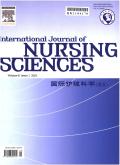文化特异性行为矫正计划对糖尿病和高血压成人糖化血红蛋白和血压的影响:一项随机对照试验
IF 3.1
3区 医学
Q1 NURSING
引用次数: 0
摘要
目的:本研究旨在确定培养特异性行为改变计划对糖尿病和高血压成人患者糖化血红蛋白(HbA1c)和血压的影响。方法采用单盲随机对照试验设计。从2024年1月至5月,从泰国东北部(Isan)一家医院的初级保健部门招募了60名未控制的2型糖尿病和高血压患者。干预组接受常规护理,辅以特定文化的行为矫正计划,该计划通过互动课程和在线网络应用程序实施,包括信息,动机和行为技巧(饮食,运动和药物使用),对照组接受常规护理。在基线和12周时收集HbA1c和血压测量值。结果干预组(n = 26)和对照组(n = 25)共51例患者完成研究。12周后,干预组23.1%的患者能够维持HbA1c和lt;7.0%;HbA1c控制不良的患者从基线时的7.7%降至12周时的3.8%。12周后,69.2%的干预组参与者收缩压维持在130 mmHg, 53.8%的干预组参与者舒张压维持在80 mmHg。分析显示,干预组患者干预后HbA1c、收缩压、舒张压水平均低于对照组(P <;0.05)。HbA1c和血压(收缩压和舒张压水平)的线性组合在时间和组间有统计学意义(P <;0.05)。结论:医疗保健提供者可以将该方案的要素纳入有效的血糖和血压管理。未来的研究应考虑更大样本量的纵向设计,并包括血脂水平的结果,以确认长期动机。本文章由计算机程序翻译,如有差异,请以英文原文为准。
Effects of a culture-specific behavior modification program on glycated hemoglobin and blood pressure among adults with diabetes and hypertension: A randomized controlled trial
Objective
This study aimed to determine the effect of a culture-specific behavior modification program on glycated hemoglobin (HbA1c) and blood pressure among adults with diabetes and hypertension.
Methods
This study was a single-blind randomized controlled trial design. From January to May 2024, a total of 60 patients with uncontrolled type 2 diabetes and hypertension from the primary care unit of a hospital in northeastern (Isan) Thailand were recruited. The intervention group received the usual care supplemented by a culture-specific behavior modification programm implemented through interactive classes and online web application consisting of information, motivation, and behavioral skills (diet, exercise, and medication use), the control group received the usual care. HbA1c and blood pressure measurements were collected at both baseline and at 12 weeks.
Results
A total of 51 patients completed the study, the intervention group (n = 26) and control group (n = 25), respectively. After 12 weeks, 23.1 % of patients in the intervention group could maintain their HbA1c < 7.0 %; those with poorly controlled HbA1c decreased from 7.7 % at baseline to 3.8 % at 12 weeks. After 12 weeks, 69.2 % of intervention group participants could maintain systolic blood pressure <130 mmHg and 53.8 % could keep diastolic blood pressure <80 mmHg. Analysis revealed that HbA1c, systolic and diastolic blood pressure levels in the intervention group were lower than the control group after the intervention (P < 0.05). There was a statistically significant difference a linear combination of HbA1c and blood pressure (systolic and diastolic BP levels) between time and group (P < 0.05).
Conclusion
These results suggest that healthcare providers can incorporate elements of this program to manage blood glucose and blood pressure effectively. Future studies should consider a longitudinal design with a larger sample size and include outcomes of lipid levels to confirm long-term motivation.
求助全文
通过发布文献求助,成功后即可免费获取论文全文。
去求助
来源期刊

International Journal of Nursing Sciences
Nursing-Nursing (all)
CiteScore
6.10
自引率
2.60%
发文量
408
审稿时长
25 days
期刊介绍:
This journal aims to promote excellence in nursing and health care through the dissemination of the latest, evidence-based, peer-reviewed clinical information and original research, providing an international platform for exchanging knowledge, research findings and nursing practice experience. This journal covers a wide range of nursing topics such as advanced nursing practice, bio-psychosocial issues related to health, cultural perspectives, lifestyle change as a component of health promotion, chronic disease, including end-of-life care, family care giving. IJNSS publishes four issues per year in Jan/Apr/Jul/Oct. IJNSS intended readership includes practicing nurses in all spheres and at all levels who are committed to advancing practice and professional development on the basis of new knowledge and evidence; managers and senior members of the nursing; nurse educators and nursing students etc. IJNSS seeks to enrich insight into clinical need and the implications for nursing intervention and models of service delivery. Contributions are welcomed from other health professions on issues that have a direct impact on nursing practice.
 求助内容:
求助内容: 应助结果提醒方式:
应助结果提醒方式:


